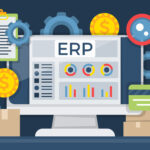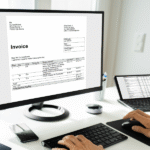What Malaysian Businesses Often Overlook, And How You Can Get It Right from Day One
Transitioning to e-Invoicing in Malaysia isn’t just about going digital. It’s about aligning with regulatory requirements, integrating systems, and ensuring data accuracy while keeping operations running smoothly. Yet many businesses stumble on common but preventable pitfalls. If you’re preparing for the LHDN’s e-Invoicing mandate or already on your journey, knowing what to avoid can save time, cost, and compliance headaches.
Let’s look at 10 common mistakes businesses make and how to steer clear of them.
1. Starting Too Late in the Implementation Timeline
e-Invoicing requires more than a last-minute system patch.
Waiting until the final months or weeks before your mandatory implementation date can lead to rushed decisions, poor vendor choices, and a lack of readiness for validation errors or rejection scenarios. The LHDN’s phased rollout offers a lead time that should be used strategically.
What You Should Do:
Start early. Evaluate your current invoicing workflows, accounting systems, and ERP setups now. Identify integration points and compliance gaps. Early preparation ensures smoother onboarding with the MyInvois system and gives your internal teams room to adapt.
2. Underestimating LHDN Validation Rules
Assuming any invoice format works is a costly mistake.
LHDN’s validation rules are specific. Your invoice will be rejected if fields are missing, data types are mismatched, or formats don’t align with requirements such as the Peppol BIS Billing 3.0 specification.
What You Should Do:
Work with e-Invoicing providers who can validate your invoice structure before submission. Understand what “successfully sent” really means it’s not about delivery, it’s about approval and clearance.
3. Neglecting System Integration with Existing ERP or Accounting Software
Manual processes don’t scale or comply.
Businesses often try to manage e-Invoicing manually or bolt it onto existing processes. This creates more friction, invites human error, and reduces visibility across departments.
What You Should Do:
Plan for seamless integration with your ERP or accounting system. Ensure your provider can offer API-level integration or connectors for tools like SAP, Oracle, Xero, or QuickBooks. This supports automation and scalability.
4. Forgetting About e-Invoice Lifecycle Scenarios
It’s not just about sending the invoice—what happens after also matters.
Invoices can be rejected, cancelled, or even disputed. Businesses that don’t plan for post-submission scenarios often scramble when faced with real-time operational exceptions.
What You Should Do:
Map out your e-Invoice lifecycle: issue, validate, transmit, acknowledge, cancel, or correct. Your system should handle all these transitions with audit trails and proper status updates.
5. Inadequate Handling of B2C and B2B Transactions
A one-size-fits-all approach won’t work.
LHDN differentiates between Business-to-Business (B2B) and Business-to-Consumer (B2C) invoices, especially in reporting requirements. Many businesses wrongly apply B2B standards to B2C transactions.
What You Should Do:
Understand how to report and tag invoice types accurately. For B2C, the customer’s TIN (Tax Identification Number) is optional, but other metadata still apply. Make sure your systems can differentiate and handle both flows appropriately.
6. Ignoring the Role of the Peppol Network
You can’t bypass it—and shouldn’t try.
Malaysia’s e-Invoice system is Peppol-based, which means using a Peppol-certified Access Point (AP) or service provider isn’t optional. Some businesses misunderstand this and try to send data directly, which leads to non-compliance.
What You Should Do:
Work with a Peppol-certified Access Point provider who ensures compliance with the BIS Billing 3.0 format, manages secure routing, and helps you stay in sync with the Peppol Directory and LHDN’s MyInvois platform.
7. Poor Master Data Quality
Bad data means failed submissions.
Incorrect or incomplete customer names, business registration numbers, addresses, or item codes are top causes of validation failures. Businesses often discover data issues only after their invoices are rejected.
What You Should Do:
Conduct a master data audit. Standardize your customer and supplier records. Use data validation scripts to catch issues before transmission. The cleaner your data, the fewer errors you’ll face.
8. Lack of Employee Training and Role Clarity
Technology alone doesn’t solve compliance. People do.
Teams often misunderstand their roles in an e-Invoicing environment. Finance assumes IT will handle compliance; IT assumes finance knows what validation entails. This gap leads to breakdowns in responsibility and missed deadlines.
What You Should Do:
Train both technical and business users on how e-Invoicing works—including processes, error handling, and reporting. Assign clear roles for validation, approval, submission, and cancellation workflows.
9. Assuming e-Invoicing Ends with Submission
Compliance doesn’t stop at sending the invoice.
LHDN may audit transactions based on real-time or post-submission data. Failing to maintain proper logs, acknowledgement receipts, or audit trails could put your business at risk—even if your invoices were successfully submitted.
What You Should Do:
Retain e-Invoice records securely for at least seven years as mandated. Ensure your solution captures submission logs, response messages from LHDN, and status change events (cancelled, replaced, adjusted). This is especially important for tax reporting and audit preparation.
10. Overlooking Scalability and Future Readiness
Building for today won’t serve you tomorrow.
As LHDN phases in mandatory e-Invoicing for more businesses, future enhancements may include real-time reporting, cross-border e-Invoicing, or additional compliance formats. Some businesses choose tools that solve only current needs, without considering long-term flexibility.
What You Should Do:
Choose a solution that supports multi-format compliance, cross-border capabilities, and integration extensibility. Whether you grow into a large taxpayer category or expand operations regionally, your platform should scale with you.
Final Thoughts: Getting It Right, the First Time
Mistakes in e-Invoicing are not just technical glitches; they affect cash flow, tax compliance, business relationships, and long-term operations. For Malaysian businesses, the switch to e-Invoicing under LHDN’s mandate is an opportunity to streamline processes, improve data integrity, and future-proof financial operations. But it requires the right foundation.
Why Advintek Is the Right Partner for Your e-Invoicing Journey
Advintek simplifies what others overcomplicate. As a Peppol-Certified Access Point Provider, CMMI Level 3 and ISO certified organization, we offer trusted, secure, and scalable solutions designed specifically for Malaysian regulatory standards. Our e-Invoicing platform is built for integration with your existing systems, enriched with compliance logic, and backed by a team that understands the local landscape inside and out.
We help you:
- Validate and structure invoices according to LHDN rules
- Connect directly to the MyInvois platform via our secure Access Point
- Manage invoice statuses, cancellations, and corrections
- Automate reporting and maintain secure archives for audit readiness
- Scale your e-Invoicing implementation with ease
Whether you’re preparing early or fixing missteps from a rushed rollout, we’re here to help you stay compliant and operational without disrupting your business.









